Welcome to the art of combining rugs in your bedroom, where layering these versatile pieces will transform your space into a cozy haven. Layering rugs in the bedroom is not only a cost-effective way to add warmth and texture, but it also allows you to create a visually pleasing and harmonious environment. By coordinating different rugs and carefully arranging them, you can enhance the aesthetics of your bedroom and showcase your unique style and personality.
- Layering rugs in the bedroom can create a cozy and inviting atmosphere.
- Start with a neutral base rug and layer a smaller, patterned rug on top to add visual interest.
- Mixing patterns is acceptable as long as they are unified by a common color or theme.
- Carefully consider furniture layout when layering rugs to achieve a cohesive and visually appealing arrangement.
- Take safety precautions to avoid tripping hazards when installing and securing the rugs.
Enhance Your Bedroom Aesthetics with Layered Rugs
Elevate your bedroom aesthetics by masterfully coordinating and arranging different rugs, resulting in a beautiful and harmonious space. Layering rugs not only adds warmth and texture to your bedroom but also allows you to showcase your unique style and personality. By carefully selecting and arranging rugs, you can create a visually pleasing environment that reflects your personal taste.
One way to enhance your bedroom with layered rugs is by starting with a neutral base rug. This provides a versatile backdrop that allows other rugs to take center stage. Consider choosing a base rug with a soft and plush texture, creating a cozy foundation for your layered design. Once you have your base rug in place, you can layer smaller, patterned rugs on top to add visual interest and create a captivating focal point.
When coordinating rugs for your bedroom, remember to consider the overall furniture layout. Take into account the size and shape of your bed, nightstands, and other furnishings to ensure that the rug arrangement complements the space. By aligning the edges of the rugs with the edges of the furniture, you can achieve a cohesive and visually appealing look.
| Rug Combination | Benefits |
|---|---|
| Neutral base rug + Vibrant patterned rug | Creates a striking contrast and adds a pop of color to the room. |
| Two or more patterned rugs with a unified color or theme | Allows you to mix patterns while maintaining harmony and cohesion. |
| Faux fur rug + Textured rug | Brings a touch of luxury and comfort, adding depth to the overall design. |
Layering rugs in the bedroom is a versatile design technique that can enhance the comfort and style of the space.” – Interior Designer
With rug layering, you have the freedom to experiment and change your design to suit your preferences or adapt to seasonal decor. Swap out rugs or reposition them to give your bedroom a refreshing new look. This versatility allows you to constantly update your space without undergoing a complete overhaul.
In conclusion, combining and coordinating rugs in the bedroom can transform the aesthetics of your space, creating a cozy and visually appealing atmosphere. By considering furniture layout, starting with a neutral base rug, and selecting rugs that complement each other, you can achieve a harmonious and stylish design. So why not explore the art of layering rugs and elevate your bedroom to new heights?
The Cost-Effective Solution for Adding Warmth and Texture
Discover the cost-effective secret to infusing your bedroom with warmth and texture by skillfully layering rugs, creating a luxurious retreat without stretching your budget. Layering rugs is a smart and stylish way to transform the atmosphere of your bedroom, adding depth and coziness to the space. By combining rugs of different textures, patterns, and sizes, you can create a visually appealing and inviting environment that reflects your personal style.
When layering rugs, it is important to consider the furniture layout and plan accordingly. Use the layout of your furniture as a guide for rug placement, ensuring that the rugs complement the arrangement and create a harmonious flow. Begin by selecting a neutral base rug that will serve as a versatile foundation for your layered design. A neutral rug provides a backdrop that allows other rugs to take center stage, adding pops of color, pattern, and texture to the room.
One way to add visual interest to your bedroom is by layering a smaller, patterned rug on top of the neutral base rug. This creates a captivating focal point and brings an element of personality and style to the space. The key is to choose patterns that are unified by a common color or theme, ensuring that they harmonize rather than clash. Experiment with different combinations to find the perfect blend that resonates with your taste.
| Key Points: |
|---|
| Layering rugs adds warmth and texture to the bedroom. |
| Consider furniture layout when placing rugs. |
| Start with a neutral base rug and layer a smaller, patterned rug on top. |
| Mix patterns with a unified color or theme for a cohesive look. |
| Take care to avoid tripping hazards when installing rugs. |
| Change and adjust rug layering to suit your preferences or seasonal decor. |
| Layered rugs create a comfortable and stylish atmosphere in your bedroom. |
With rug layering, you have the flexibility to change and adjust your design to suit your preferences or seasonal decor. As trends and styles evolve, you can easily update the look of your bedroom by repositioning or swapping out rugs. This allows you to keep your space fresh and inviting throughout the year.
Transform your bedroom into a cozy and inviting sanctuary by skillfully layering rugs. This cost-effective design technique allows you to infuse warmth and texture into the space without breaking the bank. With careful consideration of furniture layout, a neutral base rug, and artful mixing of patterns, you can create a bedroom that not only looks stunning but also feels like a luxurious retreat.
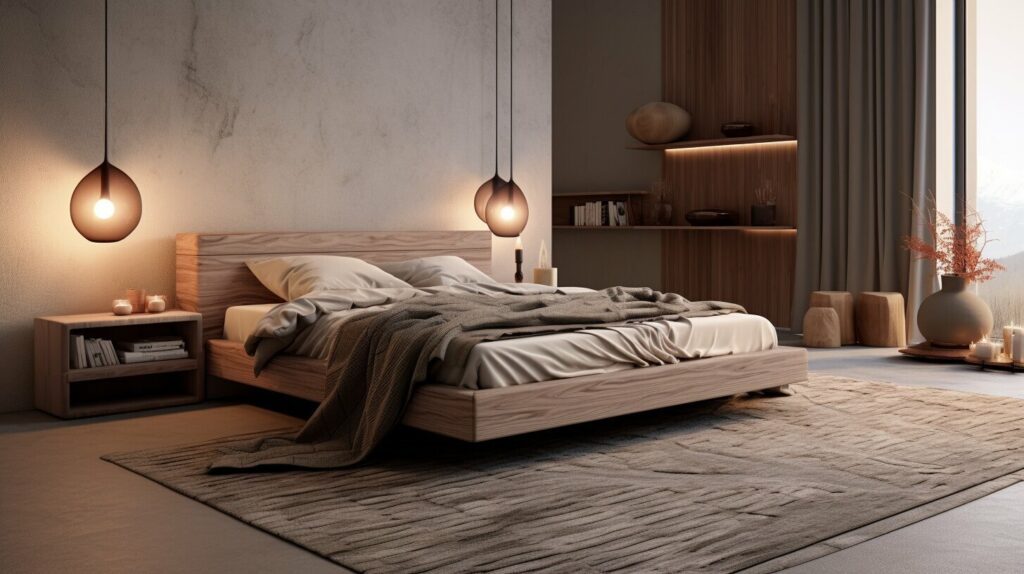
- Layering rugs in the bedroom adds warmth and texture to create a cozy atmosphere.
- Consider the furniture layout and start with a neutral base rug.
- Layer a smaller, patterned rug on top for visual interest.
- Mix patterns with a unified color or theme for a cohesive look.
- Ensure rugs are installed securely to avoid tripping hazards.
- Experiment with rug layering to suit your preferences and change with the seasons.
- Transform your bedroom into a comfortable and stylish space with layered rugs.
Consider Furniture Layout for Optimal Rug Layering
Achieve a seamlessly blended rug combination by strategically considering your furniture layout, ensuring that each piece fits harmoniously into the overall design. When layering rugs in the bedroom, it’s essential to plan how the rugs will interact with your furniture. This will help create a cohesive and visually appealing arrangement that maximizes the impact of your layered rugs.

Start by assessing the size of your bedroom and the furniture you have. Consider the placement of your bed, nightstands, dressers, and other key pieces. Think about how these items will interact with the layered rugs and how they will be positioned on each rug. This careful planning will ensure that the rugs frame your furniture beautifully, creating a sense of balance and harmony in the room.
Table: Rug Sizing Recommendation
| Furniture | Rug Size |
|---|---|
| Queen or King Bed | 8′ x 10′ or 9′ x 12′ |
| Twin or Full Bed | 5′ x 8′ |
| Nightstands | 4′ x 6′ or 5′ x 7′ |
| Dressers | 6′ x 9′ |
Remember to leave enough space around the furniture for easy movement, ensuring that the layered rugs don’t obstruct walkways or create tripping hazards. And don’t forget to consider the scale of the room when selecting rug sizes. Larger rooms can accommodate bigger rugs, while smaller rooms may call for more petite options.
“Strategically layering rugs can add depth, texture, and personality to your bedroom while creating a cozy and inviting space.” – Interior Design Expert
By carefully considering your furniture layout when layering rugs, you can achieve a seamlessly blended rug combination that enhances the overall design of your bedroom. The rugs will complement your furniture, creating a harmonious and visually appealing space that invites relaxation and comfort.
Building a Strong Foundation with a Neutral Base Rug
Lay a strong foundation for your rug layering masterpiece with a neutral base rug, providing a versatile canvas for the charming interplay of patterns and textures. A neutral rug serves as the anchor, allowing other rugs to shine and adding depth to your bedroom design. Whether you opt for a classic beige or a soft gray, the neutral base rug sets the stage for a harmonious and visually appealing layered rug arrangement.
Choosing a neutral base rug ensures that it complements a wide range of colors and patterns, making it easier to mix and match with other rugs. This allows you to experiment with different combinations and create a personalized look that reflects your unique style.
| Benefits of a Neutral Base Rug: |
|---|
| • Provides a versatile backdrop for layered rugs |
| • Complements a wide range of colors and patterns |
| • Creates a cohesive and visually appealing design |
With a neutral base rug as your starting point, you can add personality to your bedroom by layering smaller, patterned rugs on top. This combination adds visual interest and allows you to incorporate different textures and designs into your space. The neutral base rug acts as a grounding element, allowing the patterns to pop and create a focal point in the room.

Whether you prefer bold geometric patterns or delicate floral designs, the options for layering rugs are endless. By starting with a neutral base rug and building upon it with patterned rugs, you can create a layered rug arrangement that brings warmth, style, and comfort to your bedroom.
Adding Visual Interest with Patterned Rugs
Capture attention and infuse your bedroom with personality by artfully layering a smaller, patterned rug on top of your neutral base, creating an eye-catching centerpiece that adds vibrancy to the space. Layered rugs are a versatile design technique that allows you to experiment with different patterns, colors, and textures, creating a unique and visually appealing look. Whether you prefer bold and graphic patterns or delicate and intricate designs, there is a patterned rug out there to suit your taste.
When selecting a patterned rug, consider the existing color scheme and style of your bedroom. Choose a rug with colors that complement the overall palette and patterns that harmonize with the existing decor. A patterned rug can act as a focal point in the room, drawing attention and adding visual interest. With the right choice of patterns, you can create a cohesive and stylish look that reflects your personal style.
Table: Pros and Cons of Patterned Rugs
| Pros | Cons |
|---|---|
| Adds personality and visual interest | Can be overwhelming if not balanced with other elements |
| Offers a wide range of design options | May clash with existing patterns in the room |
| Creates a focal point in the space | Requires careful consideration of color and pattern coordination |
Remember to consider the size of the pattern in relation to the size of your room. In a small bedroom, a larger patterned rug may overpower the space, while in a larger room, a smaller pattern may get lost. Experiment with different rug sizes, shapes, and placements to find the perfect balance. By layering your patterned rug on top of a neutral base, you can create a visually stunning and harmonious composition that transforms your bedroom into a cozy and inviting sanctuary.

Continue reading to discover how to mix patterns and colors for a unified and stylish look.
Mixing Patterns with a Unified Color or Theme
Embrace the delightful world of pattern mixing by carefully selecting complementary designs unified by a common color or theme, transforming your bedroom into a harmonious haven of style. Layering rugs allows you to create a visually captivating focal point in the room, drawing attention to the floor area while adding depth and texture to your bedroom decor.
When combining rugs with different patterns, it’s important to ensure they work together harmoniously. Consider using a neutral base rug as the foundation, allowing it to serve as a versatile backdrop for your patterned rugs. Opt for patterns that share a common color palette or theme to maintain cohesion and prevent visual overload.
For example, you could pair a neutral base rug with a smaller rug featuring a geometric pattern in shades of gray and blue. The geometric design adds visual interest and complements the color scheme of the room. This combination creates a balanced and stylish look that transforms your bedroom into a cozy retreat.
Remember, rug layering is an art form, and you have the freedom to experiment with different combinations and designs. Don’t be afraid to mix floral patterns with stripes or abstract motifs with chevron prints. Just ensure that the patterns are unified by a common color or theme, creating a cohesive and visually pleasing look.
“Mixing patterns can be a fun and creative way to express your personal style in your bedroom decor. By carefully selecting complementary designs unified by a common color or theme, you can create a harmonious and visually appealing space.”

| Rug Combination | Color Palette/Theme |
|---|---|
| Neutral base rug + Geometric patterned rug | Shades of gray and blue |
| Floral patterned rug + Striped rug | Pink and white |
| Abstract motif rug + Chevron print rug | Black and gold |
By following these tips and experimenting with different rug combinations, you can create a visually stunning and personalized bedroom design that reflects your unique style. So go ahead, embrace the art of rug layering and transform your bedroom into a cozy and stylish haven.
Safety First: Avoiding Tripping Hazards
Prioritize safety while indulging in the art of rug layering, ensuring a secure and hazard-free bedroom by properly securing your rugs and preventing any potential tripping accidents. The beauty and warmth of layered rugs can be fully enjoyed when safety measures are in place. Here are some essential tips to keep in mind:
- Use rug pads: Placing rug pads underneath your rugs provides an extra layer of grip and stability. This helps prevent rugs from slipping or sliding, reducing the risk of tripping.
- Secure loose edges: Rugs with curled or frayed edges can pose a tripping hazard. Use rug tape or adhesive strips to secure any loose edges and keep them flat against the floor.
- Position rugs strategically: Make sure that rugs are positioned in areas where they won’t obstruct any doorways or foot traffic paths. Avoid placing rugs in high-traffic areas to minimize the risk of accidents.
- Check for evenness: Uneven rugs can easily cause trips and falls. Regularly inspect your layered rugs to ensure they lay flat and do not create any bumps or ridges.
By taking these precautions, you can enjoy the beauty and comfort of layered rugs without worrying about potential hazards. Remember, safety should always come first when designing your cozy bedroom retreat.

| Tips | Description |
|---|---|
| Use rug pads | Add rug pads underneath your rugs to prevent slipping and ensure stability. |
| Secure loose edges | Use rug tape or adhesive strips to secure loose edges and keep them flat against the floor. |
| Position rugs strategically | Place rugs in areas where they won’t obstruct doorways or foot traffic paths. |
| Check for evenness | Regularly inspect your layered rugs to ensure they lay flat and do not create any bumps or ridges. |
Versatility: Changing Rug Layering to Suit Your Preferences
Embrace the versatility of rug layering as you effortlessly adapt your bedroom’s ambiance to match evolving preferences or seasonal trends by repositioning and swapping rugs as desired. Layering rugs allows you to experiment with different textures, patterns, and colors, creating a personalized and ever-changing space.
With rug layering, you have the freedom to mix and match rugs of various sizes, shapes, and designs, giving your bedroom a unique and curated look. You can start with a neutral base rug, such as a cozy shag or a plush wool rug, that provides a warm and comfortable foundation. Then, layer a smaller rug on top to add visual interest and personality. This top layer rug can feature a bold pattern, intricate design, or vibrant colors to create a focal point in your bedroom.
| Rug Layering Tips: |
|---|
| 1. Swap rugs to reflect the seasons: In warmer months, opt for lighter and breathable materials like cotton or jute rugs, while thicker and heavier rugs like wool or faux fur can be layered during the colder months. |
| 2. Play with texture: Combine rugs with different textures to create a tactile experience in your bedroom. Pair a smooth and silky rug with a chunky and textured one for a visually dynamic effect. |
| 3. Mix and match patterns: Don’t be afraid to experiment with patterns when layering rugs. To maintain harmony, choose rugs with a similar color palette or theme. For example, a geometric rug can be layered over a floral rug if they share common colors or a contemporary design. |
By regularly changing and adjusting your rug layering, you can transform the look and feel of your bedroom without the need for major renovations or expensive decor. It’s like having a blank canvas that you can continuously reimagine and redesign to suit your evolving style and preferences. So, let your creativity soar and discover the endless possibilities of rug layering!

“Layered rugs can add depth and dimension to your bedroom. By combining rugs of different sizes, you create visual layers that draw the eye and make the space more interesting. Remember to balance scale and proportion when layering rugs, ensuring that each rug complements the others and the overall design of the room.”
With the flexibility of rug layering, you can easily switch up the arrangement or swap out rugs whenever you desire a fresh look. Whether you’re aiming for a cozy, bohemian vibe or a modern, minimalist aesthetic, rug layering offers a multitude of possibilities to transform your bedroom into a space that reflects your unique style and preferences.
Transforming Your Bedroom Comfort with Layered Rugs
Immerse yourself in unparalleled comfort as you indulge in the inviting warmth and cozy texture provided by skillfully layering rugs, transforming your bedroom into a haven of relaxation. Layering rugs is not only aesthetically pleasing but also a cost-effective way to add depth and character to your space. By carefully coordinating different rug combinations and considering furniture layout, you can create a visually appealing and harmonious environment that reflects your unique style.
When starting the layering process, it is best to begin with a neutral base rug to serve as a versatile backdrop. This allows other rugs to take center stage and adds personality to the room. A neutral rug can complement various color schemes and patterns, providing a solid foundation for the overall design.
For added visual interest, layer a smaller, patterned rug on top of the neutral base rug. This creates a captivating focal point in the room and adds an extra touch of style. You can experiment with different patterns, as long as they are unified by a common color or theme. This coordination creates a cohesive look that ties the room together.
| Benefits of Layering Rugs in the Bedroom |
|---|
| • Adds warmth and texture to the space |
| • Enhances the aesthetics of the room |
| • Cost-effective way to transform the ambiance |
| • Provides versatility to change with seasons or preferences |
When layering rugs, it is important to ensure safety by properly securing the rugs and ensuring they lay flat. This prevents tripping hazards and creates a comfortable environment. Additionally, rug layering allows you to easily change and adjust the arrangement to suit your preferences or adapt to seasonal decor. This versatility gives you the freedom to refresh your bedroom’s look whenever desired.
Immerse yourself in the comfort and style of layered rugs in your bedroom. Experience the cozy embrace of beautifully combined textures and colors, creating a space that truly reflects your personality. With a little creativity and thoughtful coordination, you can transform your bedroom into a retreat that exudes warmth, comfort, and unparalleled charm.

Unleash your creativity and express your personal style by fearlessly experimenting with diverse rug combinations and arrangements, creating a bedroom that reflects your individuality and flair. Rug layering offers a myriad of possibilities to play with colors, patterns, textures, and sizes, allowing you to curate a unique and visually captivating space.
One way to add a touch of personality to your bedroom is by mixing rugs with different patterns. Dare to combine geometric prints with floral motifs or tribal designs with abstract patterns. The key is to find a common color or theme that unifies the rugs, creating a harmonious and cohesive look.
For those who prefer a more subtle approach, consider layering rugs of varying textures. A plush shag rug layered on top of a flat-woven rug adds depth and dimension to your bedroom, creating a cozy and inviting atmosphere. By juxtaposing different textures, you can create a visually engaging space that invites you to sink your toes into the plushness of the rugs.
Don’t be afraid to think outside the box and break the rules. Experiment with unconventional rug placements and sizes. Place a small runner rug at the foot of the bed or layer multiple rugs in an asymmetrical arrangement to add an unexpected element to your bedroom design. The key is to let your imagination roam free and create a space that truly represents your unique style and taste.

| Rug Layering Tips: |
|---|
| 1. Start with a neutral base rug to provide a versatile backdrop for other rugs. |
| 2. Mix patterns by maintaining a unified color or theme. |
| 3. Consider layering rugs of different textures for added visual interest. |
| 4. Experiment with unconventional rug placements and sizes to create a unique look. |
| 5. Ensure rugs are properly secured and laid flat to avoid tripping hazards. |
By following these tips and letting your creative instincts guide you, you can transform your bedroom into a personal sanctuary that showcases your style and adds a cozy touch of rug-layered elegance.
Conclusion
Congratulations on discovering the art of combining rugs to create a cozy and inviting bedroom ambiance. By considering furniture layout, starting with a neutral base rug, and experimenting with pattern mixing, you can transform your space into a stylish and comfortable haven. Rug layering offers a cost-effective way to add warmth and texture to your bedroom, enhancing its overall appeal.
When layering rugs, it is essential to plan your furniture layout accordingly. By carefully selecting the size and placement of your rugs, you can achieve a cohesive and visually pleasing arrangement. Starting with a neutral base rug provides a versatile foundation, allowing other rugs to take center stage and infuse your space with personality.
Embrace the creative possibilities of pattern mixing to add visual interest to your bedroom. By layering a smaller, patterned rug on top of a neutral base rug, you can create a captivating focal point that reflects your unique style. Remember to ensure that the patterns are unified through a common color or theme to maintain harmony in your design.
As you embark on your rug layering journey, it is crucial to prioritize safety. Take care to secure the rugs properly and ensure they lay flat to avoid any tripping hazards. Additionally, rug layering offers versatility, allowing you to easily change and adjust the arrangement to suit your preferences or adapt to seasonal decor.
Transform your bedroom into a comfortable and stylish haven with the art of combined rugs. Enjoy the countless possibilities for personal expression and design enhancement that rug layering brings. Explore different rug combinations, experiment with patterns, and create a space that truly reflects your individuality. Start your rug layering journey today and elevate the beauty and comfort of your bedroom.
FAQ
Can I mix different patterns when layering rugs in my bedroom?
Yes, mixing patterns is acceptable as long as they are unified by a common color or theme. This creates a cohesive and stylish look.
How should I secure the layered rugs to avoid tripping hazards?
It is important to secure the rugs properly to avoid tripping. Make sure they lay flat and use rug tape or non-slip rug pads to keep them in place.
Can I change the rug layering to suit different seasons or my personal preferences?
Absolutely! Rug layering is versatile and can be easily changed and adjusted. You can reposition and swap rugs to give your bedroom a new look and adapt to seasonal decor.
Why should I consider furniture layout when layering rugs?
Considering furniture layout is important to ensure a cohesive design. By choosing the right size and placement of your rugs, you can create a visually appealing arrangement that complements your furniture.
What is the role of a neutral base rug in layered rug designs?
A neutral base rug serves as the foundation of your layered rug design. It provides a versatile backdrop, allowing other rugs to add personality and create a focal point in the room.

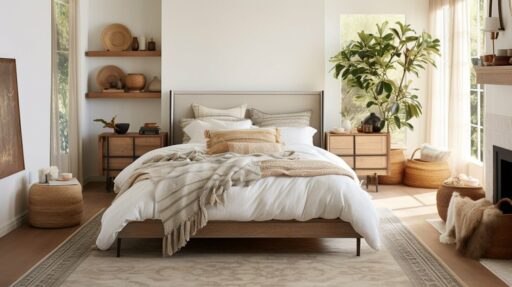
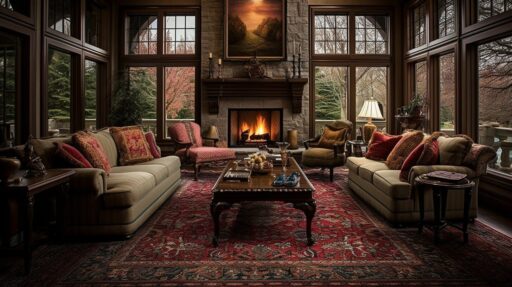











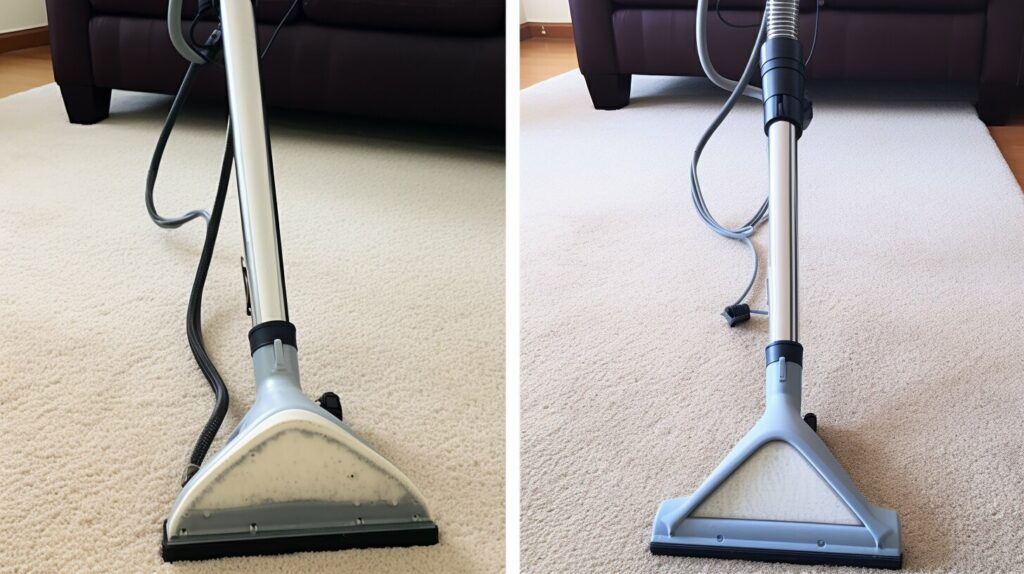
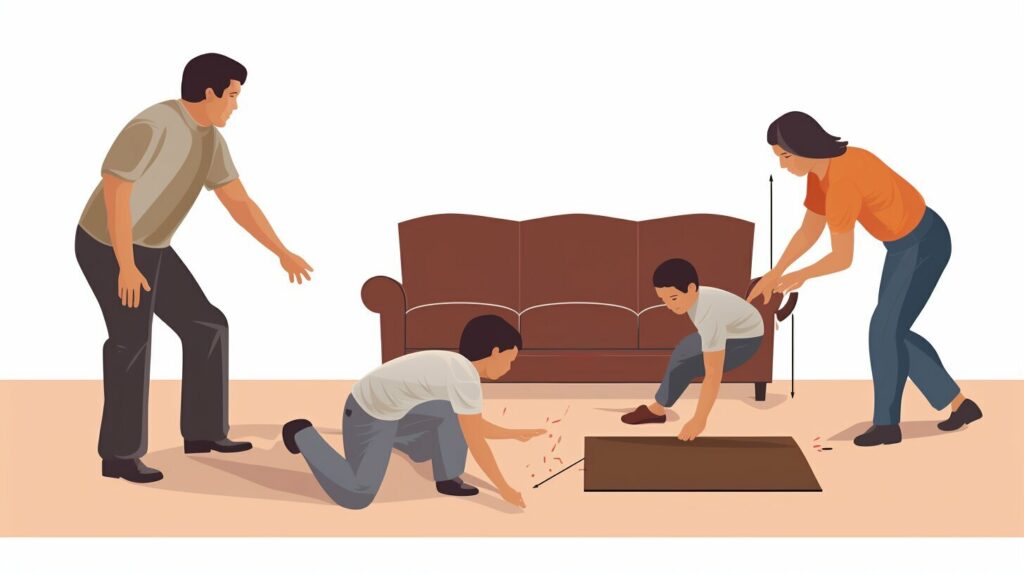
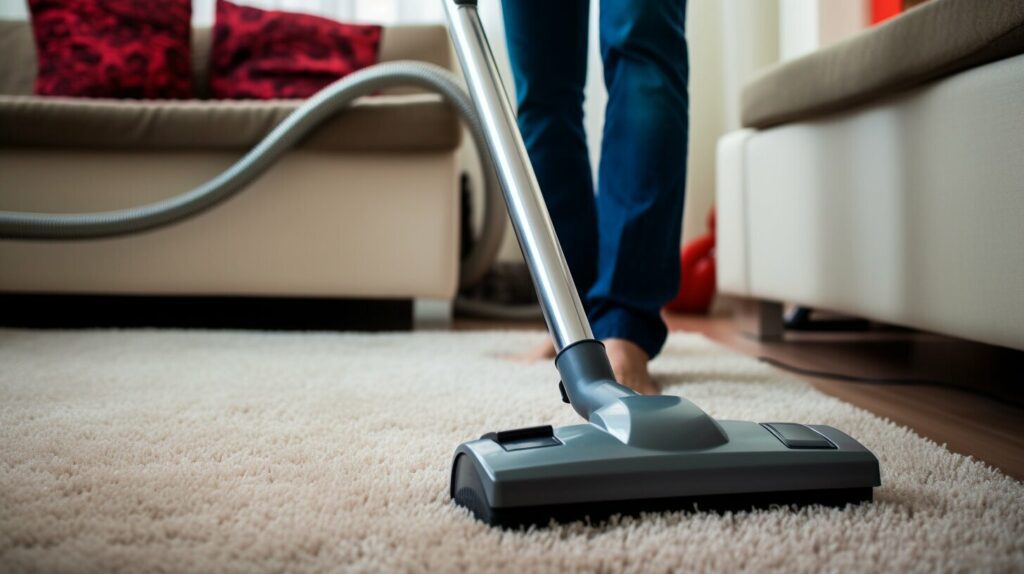 When dealing with snags and sprouts, take your time and handle them delicately to maintain the integrity of your bedroom carpet. Regularly inspecting and caring for your carpet will help prolong its lifespan and keep it looking its best for years to come.
When dealing with snags and sprouts, take your time and handle them delicately to maintain the integrity of your bedroom carpet. Regularly inspecting and caring for your carpet will help prolong its lifespan and keep it looking its best for years to come.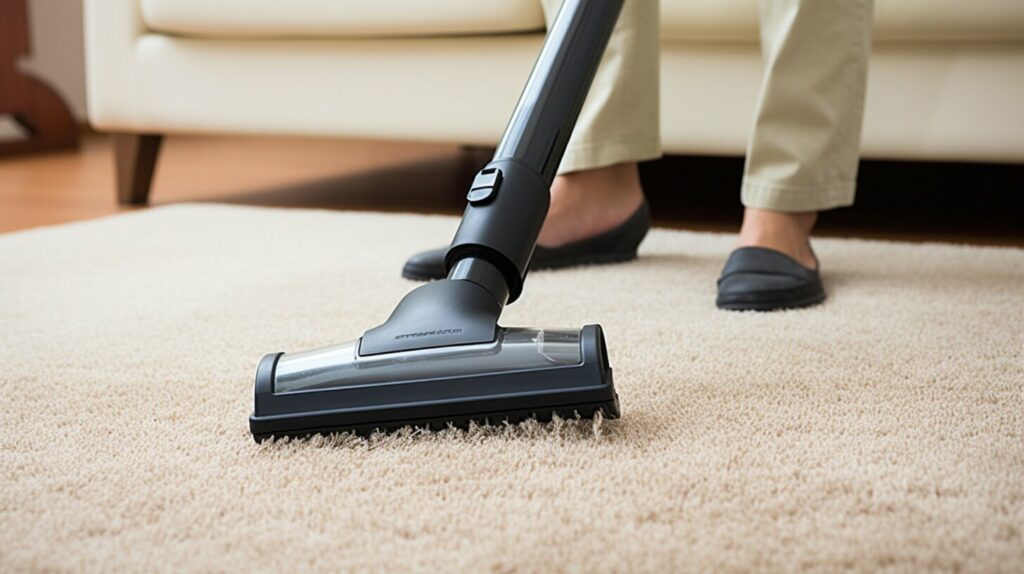
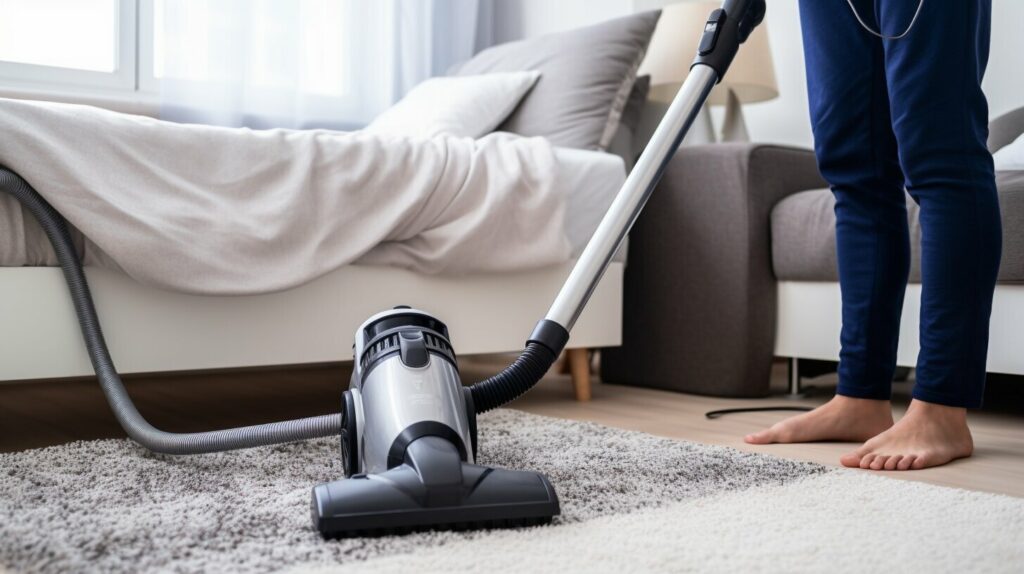
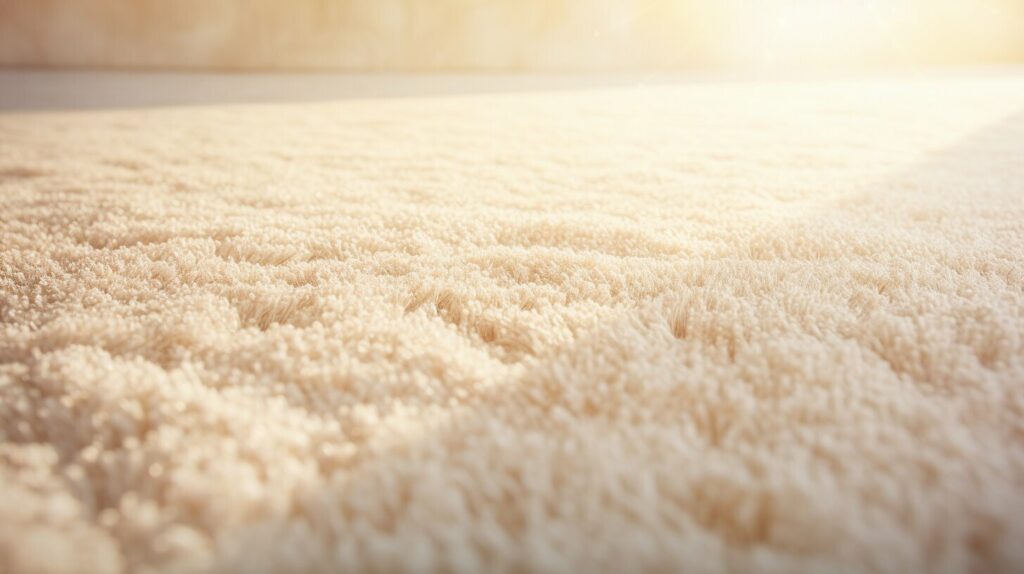
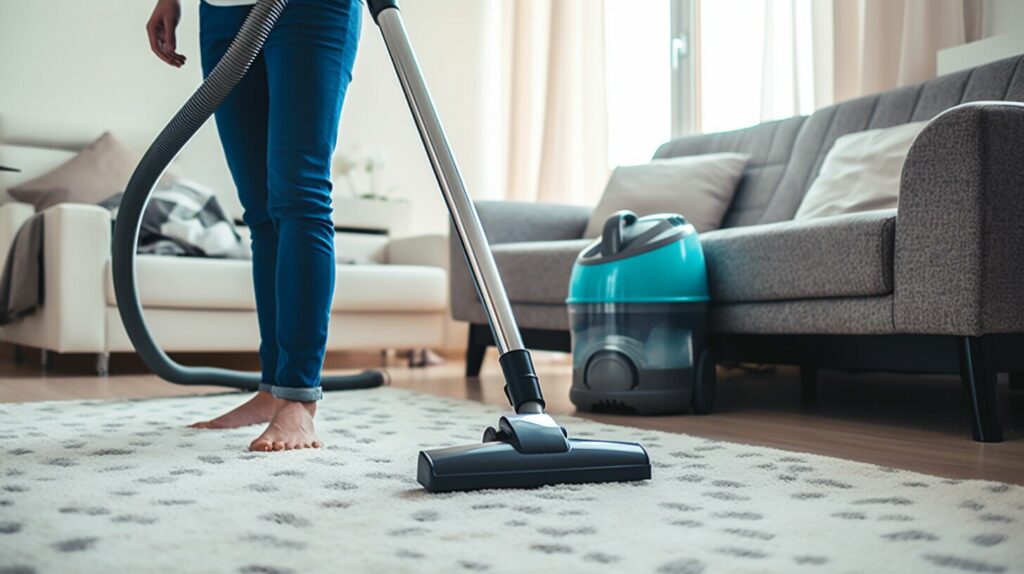


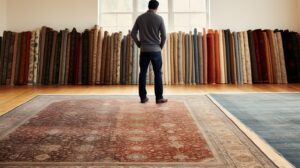
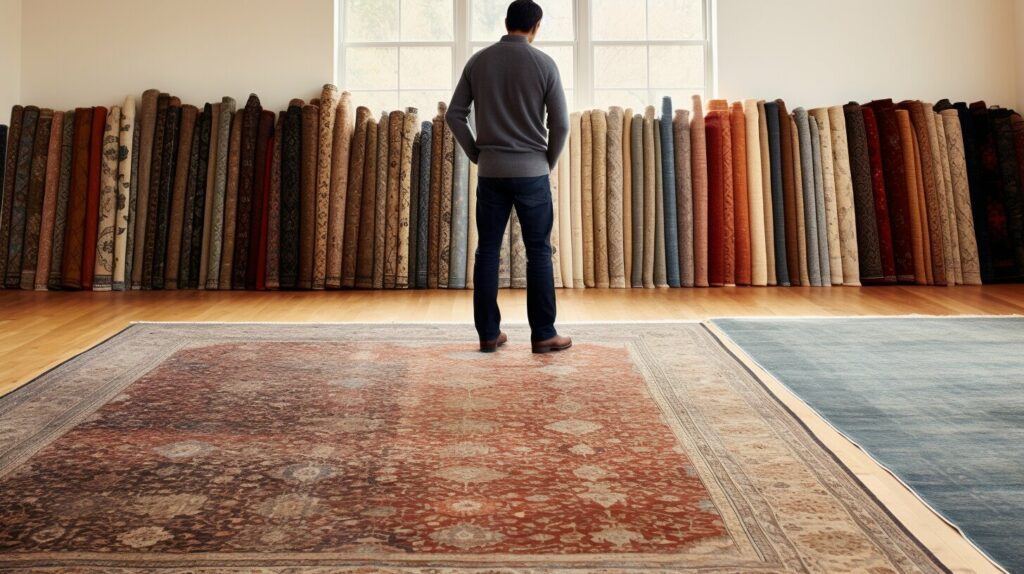
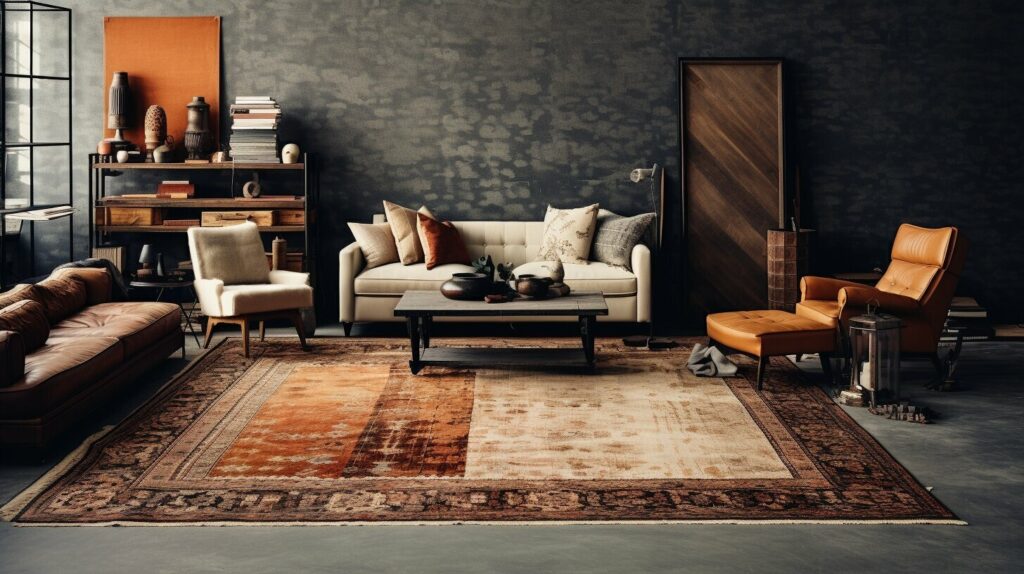
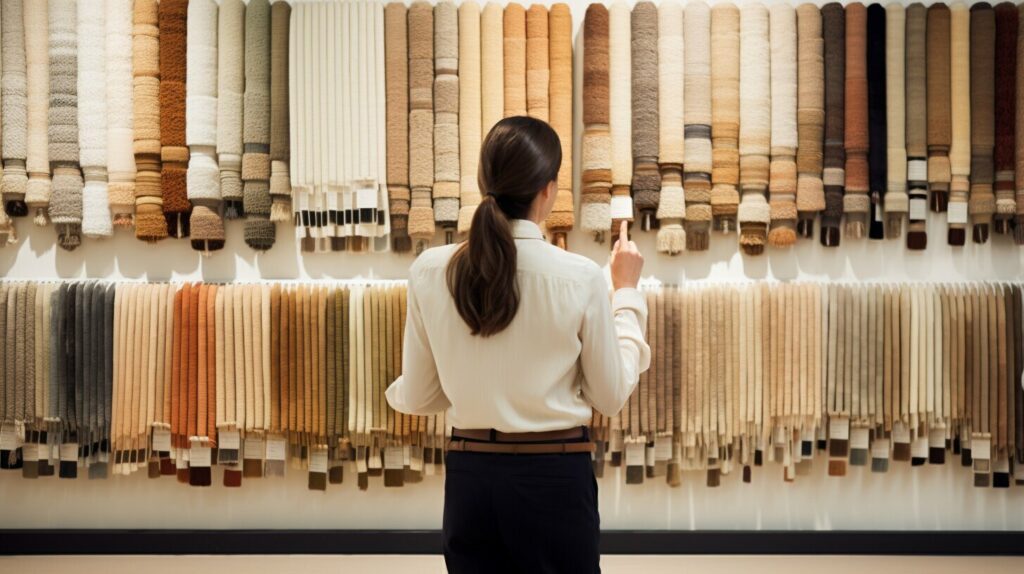

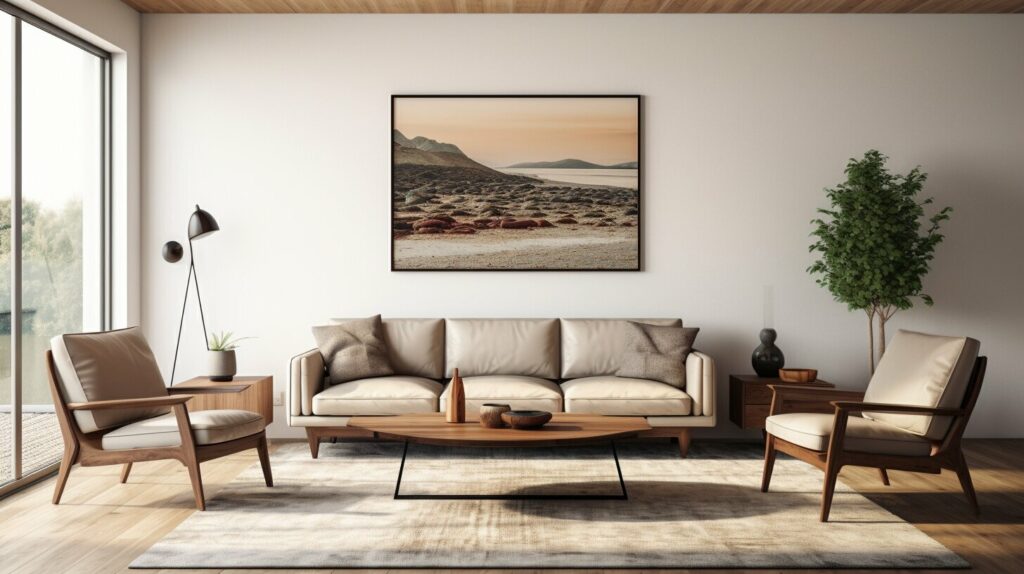

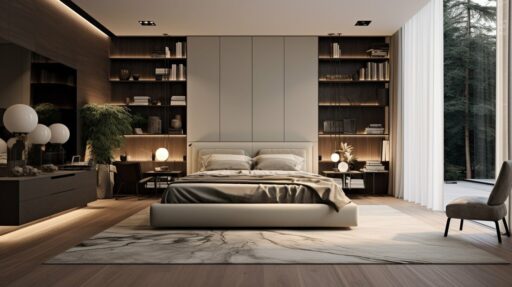





 So, whether you’re on a tight budget or passionate about sustainable living, there are plenty of rug options available. Remember to measure your space and consider the placement, material, and aesthetics that best suit your bedroom. By being mindful of these factors and exploring budget-friendly and eco-friendly options, you can find the perfect rug that not only enhances your bedroom flooring but also reflects your personal style and values.
So, whether you’re on a tight budget or passionate about sustainable living, there are plenty of rug options available. Remember to measure your space and consider the placement, material, and aesthetics that best suit your bedroom. By being mindful of these factors and exploring budget-friendly and eco-friendly options, you can find the perfect rug that not only enhances your bedroom flooring but also reflects your personal style and values.